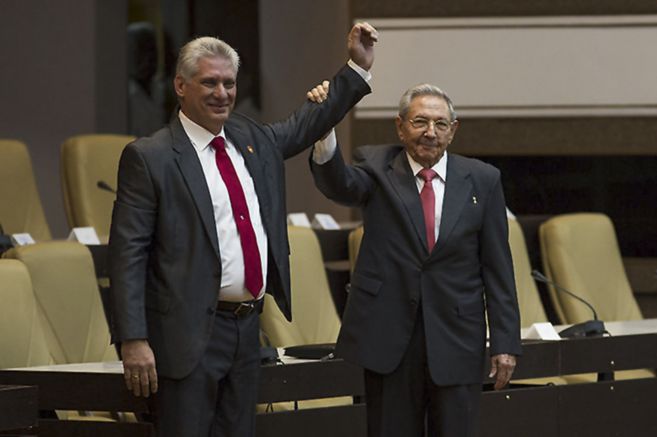
At the next congress of the Communist Party of Cuba, Raúl Castro will leave power for good. These were the key dates that marked his tenure and that of his brother, Fidel.
The late leader of the Cuban revolution, Fidel Castro, and his brother Raul, who is leaving the leadership of the Communist Party at its next congress, ruled the country for more than 60 years. Raúl Castro transferred the presidency of Cuba to Miguel Díaz-Canel in April 2018. Here are the ten dates that marked the mandates of the Castro brothers.
Triumph of the Revolution
1 of January of 1959, of the dictator Fulgencio Batiste flees after 26 months of guerilla warfare of the Castro brothers. Fidel Castro proclaims the “beginning of the Revolution” from Santiago de Cuba (east). The government began radicalizing in May with the first land reform law by which it expropriated land from large landowners.
Nationalization and that
On August 17, 1960, American companies were nationalized in Cuba in response to the oil boycott and the reduction of the sugar quota system, which would lead to the rupture of diplomatic relations on January 3, 1961. In February 1962, Washington issued a trade embargo on the island, which is still in force.
You can read: Five things to know about Raúl Castro’s departure from power in Cuba
Bay of Pigs
Between April 15 and 19, 1961, revolutionary troops defeated 1,400 CIA-trained and funded anti-Castroists trying to invade Cuba through Cochin Bay (Girón Beach). On May 1, Fidel declared the Marxist-Leninist character of the revolution. In 1965, the existing political forces in the Communist Party of Cuba (CCP), the only one since then, would be unified.
Missile Crisis
From October 14 to 28, 1962, the United States discovered missiles installed in Cuba by the Soviet Union, unleashing a crisis that shook the world for fear of the start of a nuclear war.
Death of “Che”
9 of October of 1967, Ernesto Che Guevara, comrade-in-arms of Fidel Castro, dies in Bolivia, a setback in the guerilla warfare that Cuba fomented in Latin America, reason why was accused to “export the revolution”.
A look at the USSR
On July 26, 1970, the “10 million harvest” failed, collecting only 8.1 million tons of sugar, the main raw material of the island. Cuba turns to the Soviet economic orbit, and in 1972 joins the Council for Economic Mutual Aid (Came).
Operation “Carlota”
5 of November of 1975 begins the Cuban military participation in Africa, initially in Angola, country sunk in a civil war after its independence. They also travel to Ethiopia, and to a lesser degree in another dozen countries. It ended in 1991 and involved about half a million soldiers. The operation was called “Carlota” in honor of a black slave who fought for her freedom in colonial Cuba.
See more: Venezuela will send 1,000 militiamen to the border area with Colombia, why?
The Special Period
On August 29, 1990, Cuba announced the start of the Special Period, a program of adjustment and resistance to face the severe crisis caused by the demise of the USSR and the communist bloc. This caused a severe shortage on the island, especially of food.
Raúl in command. Death of Fidel
On July 31, 2006, Raúl Castro, until then number two in the country leadership, temporarily replaced Fidel, after he became seriously ill. He officially became president in 2008 and began a slow program of reforms to “update” the worn-out Soviet-cut economic model. On November 25, 2016, Fidel died at the age of 90.
Thaw with EE. UU.
On December 17, 2014, Raúl Castro and then-President of the United States Barack Obama announced the beginning of the rapprochement that would lead to the re-establishment of relations in 2015, after more than half a century of confrontation. The thawing process begins, which will be halted after Donald Trump’s arrival in the White House in January 2017 with a tightening of economic sanctions.